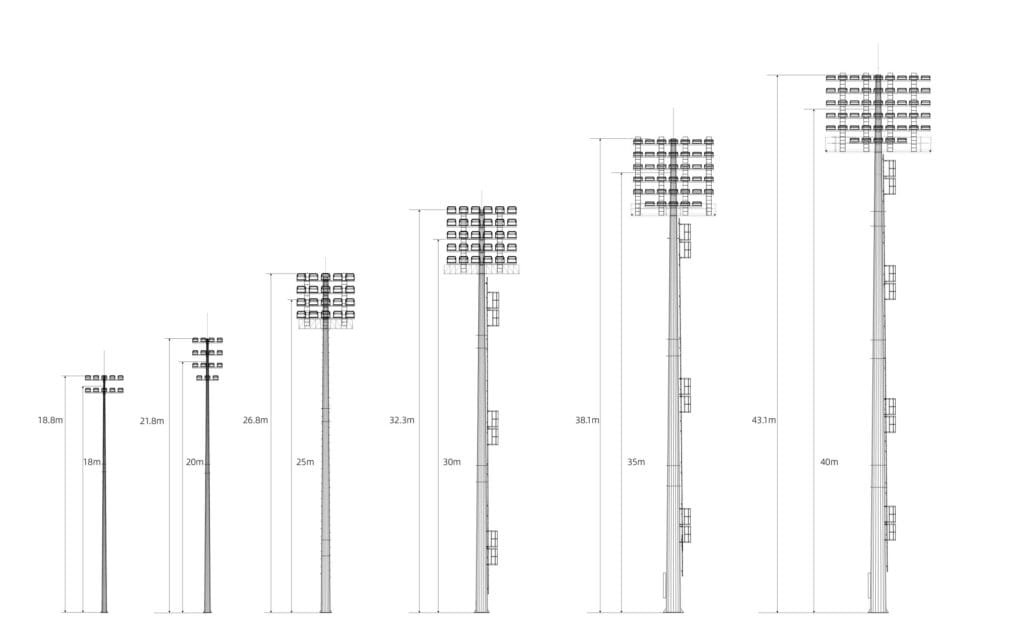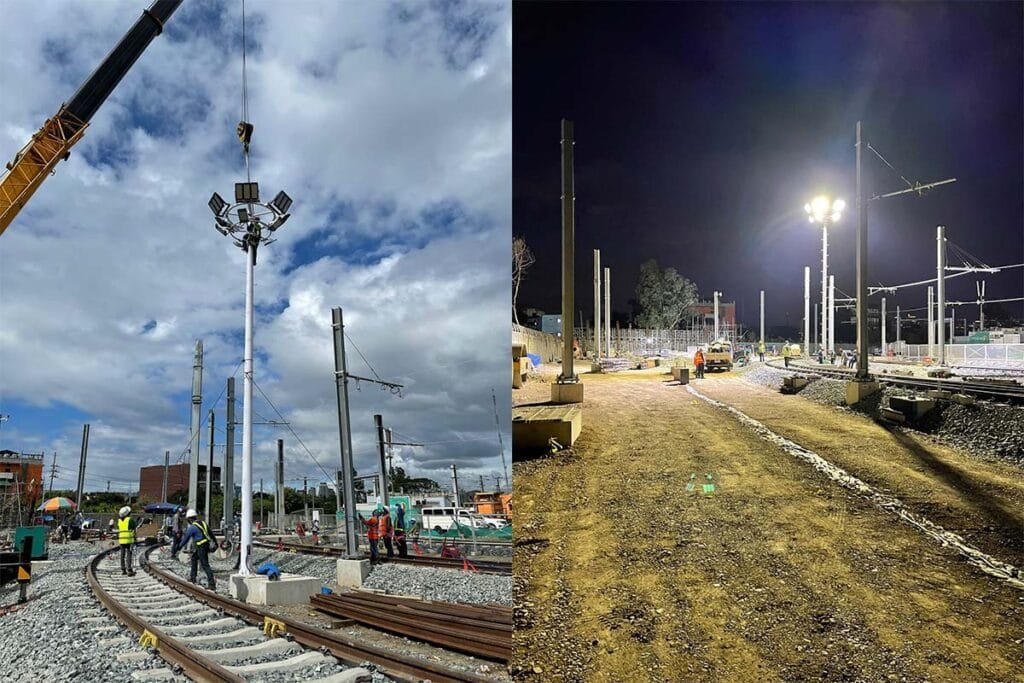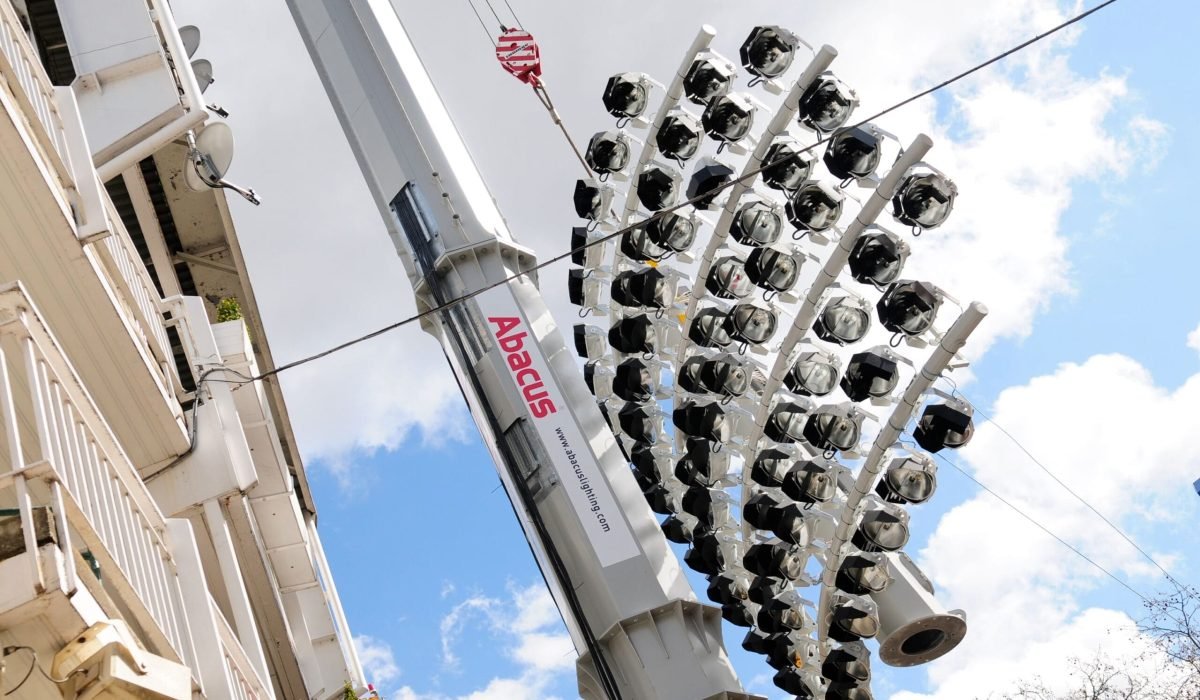Most high mast poles range from 60 to 175 feet (18–53 meters) tall, with some reaching over 240 feet (73 meters) for large-scale illumination.
There isn’t a single “maximum” because these structures are engineered to suit project demands. In practice, pole height is influenced not just by lighting coverage but also by wind loads, regulatory limits, and even how communities perceive tall structures against the skyline.
From my work in African infrastructure projects, I’ve learned that the ideal pole height is rarely about going as tall as possible—it’s about striking the right balance between illumination needs, installation costs, and long-term maintenance.
High Mast Poles for Highways: Why 100–120 Feet Works Best
For highways and busy intersections, most authorities settle around the 100–120 foot range.
We found that at this height:
- Light spreads evenly across multi-lane highways.
- Drivers experience less glare compared to lower fixtures.
- Fewer poles are required, which means reduced maintenance costs.
On a recent expressway project in East Africa, our team compared simulations at 80, 100, and 120 feet. At 80 feet, we needed 30% more poles to avoid dark patches. At 120 feet, visibility improved, while installation remained manageable. This experience reinforced why the 100–120 foot range is considered a sweet spot.
Lessons from a Logistics Hub Project: Why We Chose 200 Feet
In one large-scale logistics hub, the client initially suggested 150-foot poles. After testing layouts, we realized coverage gaps appeared near container stacks.

We recommended 200-foot poles, which achieved two things:
- Wide coverage: Fewer poles were needed to light massive loading zones.
- Reduced maintenance frequency: Taller poles with optimized fixture clusters meant fewer lifts and less downtime for servicing.
The client accepted the change after we demonstrated how, over ten years, the reduced maintenance visits would save more than the additional upfront cost of taller poles.
Airports, Seaports, and Stadiums: Why 150–240 Feet Poles Dominate
At airports and ports, tall masts aren’t just about spreading light—they’re about operational reliability.
At a coastal seaport project I worked on, 240-foot poles were selected because:
- Lighting had to cover not just open yards but also docked vessels.
- Strong winds required reinforced foundations, making shorter poles less effective at the required spacing.
- Security teams preferred higher vantage points to reduce blind spots.
Similarly, stadiums often rely on poles above 150 feet to eliminate shadowing on the pitch, ensuring compliance with broadcasting standards.
Factors That Truly Influence High Mast Pole Height
Unlike the simple “shorter vs taller” debate, several deeper factors shape decisions:
- Size of illuminated area: Wider zones demand taller poles, but it’s a trade-off with fixture wattage and spacing.
- Regulatory alignment: Highway authorities and aviation bodies often cap or mandate pole heights.
- Community acceptance: In urban centers, residents sometimes oppose tall masts for aesthetic or light pollution reasons.
- Fixture configuration: A well-angled 12-light cluster at 100 feet can outperform a poorly designed setup at 150 feet.
- Environmental conditions: In windy coastal areas, pole height is often limited by structural safety calculations.
Practical Checklist for Selecting the Ideal Pole Height
When advising clients, I typically walk them through these steps:

- Measure the site area – Highways, ports, and stadiums have vastly different lighting footprints.
- Define light level requirements – A freeway doesn’t need the same lux as an airport apron.
- Check regulatory height limits – Some road agencies specify maximums.
- Simulate fixture layouts – Use software to compare glare, shadow, and overlap.
- Balance cost-performance trade-offs – Sometimes adding fixtures at 120 feet is more economical than fewer fixtures at 200 feet.
Comparing Height Ranges and Applications
| Height Range | Common Applications | Key Advantages |
|---|---|---|
| 60–100 ft (18–30 m) | Highways, medium intersections | Affordable, reliable coverage |
| 100–150 ft (30–45 m) | Freeways, large junctions, city bypasses | Balanced illumination, fewer poles needed |
| 150–200 ft (45–61 m) | Airports, stadiums, industrial yards | Wide coverage, less shadowing |
| 200–240+ ft (61–73+ m) | Seaports, mega-logistics hubs | Long-term efficiency, reduced servicing frequency |
From the table above, you’ll notice that ports consistently demand the tallest poles. This isn’t only about spreading light farther—it’s also about reducing how often maintenance crews need to bring in cranes for servicing.
Frequently Asked Questions on High Mast Pole Height
Q: What is the tallest high mast pole ever built?
Some records show installations above 250 feet, especially at large ports and airports where wide-area coverage is critical.
Q: How do engineers decide between 150 ft and 200 ft poles?
The decision usually comes down to site size, wind loading, and fixture layout simulations. For example, if a 150-foot pole leaves gaps, engineers may recommend 200 feet to optimize coverage.
Q: What is the best height for high mast pole in highways?
Highways typically perform best in the 100–120 foot range, striking a balance between visibility and cost.
Final Thoughts: Experience Over Templates
From highways in Nairobi to seaports on the Indian Ocean, one lesson has remained constant in my career: there is no universal maximum height.

The best results come from site-specific evaluation, backed by simulations, regulatory awareness, and real-world experience. Looking ahead, I believe future trends will push for smarter poles—not necessarily taller ones—integrating adaptive LED fixtures and sensors that maximize coverage while reducing energy waste.
👉 If you’re planning a project, don’t just ask “how tall can a pole go?” Instead, ask “what height gives me the best performance for the long term?”


